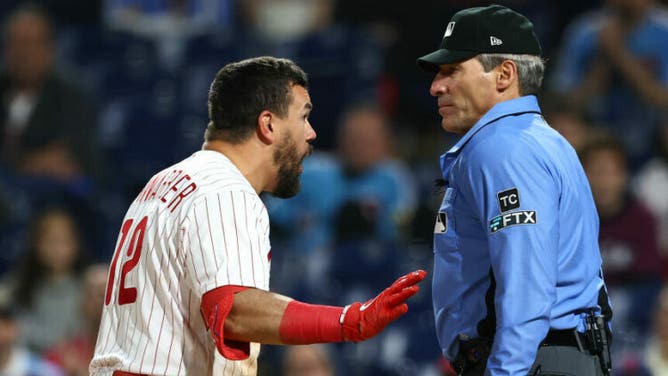New Details On MLB's Robo Umps Test Released
Major League Baseball has long been teasing the incorporation of robo umpires to supplement the on-field calls of balls and strikes. The robotic umpire system is currently in use in the minor leagues and is generally successful. But during spring training, it's coming to major league fields for the first time.
MLB announced the spring test at the start of the offseason, but with little explanation as to how the system would function in practice. With just a few weeks to go before the start of spring games, more details have just been released as to how the league intends to incorporate the automatic ball and strike system (ABS).
Instead of each call being determined by the ABS, the test will be run with a challenge system, where each team will get two challenges per game. They'll be awarded further challenges if they're successful with overturning calls.
More than 60 percent of spring training games will have the ABS system in place, and the strike zone will be individually tailored to each hitter. Seriously.

Kyle Schwarber (12) of the Philadelphia Phillies argues with home plate umpire Angel Hernandez after being called out on strikes during the ninth inning against the Milwaukee Brewers at Citizens Bank Park on April 24, 2022, in Philadelphia, Pennsylvania. The Brewers defeated the Phillies 1-0. (Photo by Rich Schultz/Getty Images)
MLB's Automatic Umpires Could Have Benefits, Drawbacks
Every player in a major league spring training camp will have their height measured, with a third-party company completing the measurements to ensure fairness.
The Athletic reported that the league sent out a presentation to the teams and players as to how the system will function.
"Two methods will be used to ensure accurate heights are collected," the presentation said, per The Athletic. "A team of independent strength and conditioning personnel will perform manual measurements using standard protocols and equipment. Representatives of the Southwest Research Institute will use biomechanical analysis to confirm the manual measurements and safeguard against potential manipulation."
On top of the measurement system, the ABS strike zone will be set at a constant 443 square inches, regardless of count. Human umpires frequently calls balls and strikes differently based on the count, resulting in a much wider strike zone on 3-0 and smaller zone on 0-2. The 443 square inches size roughly corresponds to the strike zone on a 2-2 pitch.
The league also said that their research has shown that the ABS will have a slightly smaller zone at the top and bottom than human umpires, resulting in more balls called above and below the zone. But it will be more rectangular on the corners, meaning pitchers could benefit from strikes dotted on the edges of the plate.
That all sounds like a mostly positive change for the game; teams won't be able to endlessly challenge pitches, will have to be judicious as to when they implement those challenges, but egregious missed calls could be corrected.
Still, given the progress the league has made with pace-of-play and shorter game times, anything that delays or slows down the action on the field could be negative. MLB's thought of that too.
In the minors, the average challenge adds 17 seconds to games, and with a two-challenge system, there were roughly 4 challenges in each contest. That would add just 68 seconds of game time, just over a minute. Not ideal, but not too extreme.
Obviously any additional challenges available to teams would slow the game down further, if each challenge is successful.
Testing the ABS in spring is the right first step to see how it could work, or not work, at the big league level. The creation of television-generated strike zone boxes has made criticizing umpires that much easier, and while the majority of missed calls are debatable, this could help fix the most obvious, Angel Hernandez-esque mistakes. That's good for baseball. As long as it doesn't slow things down too much.